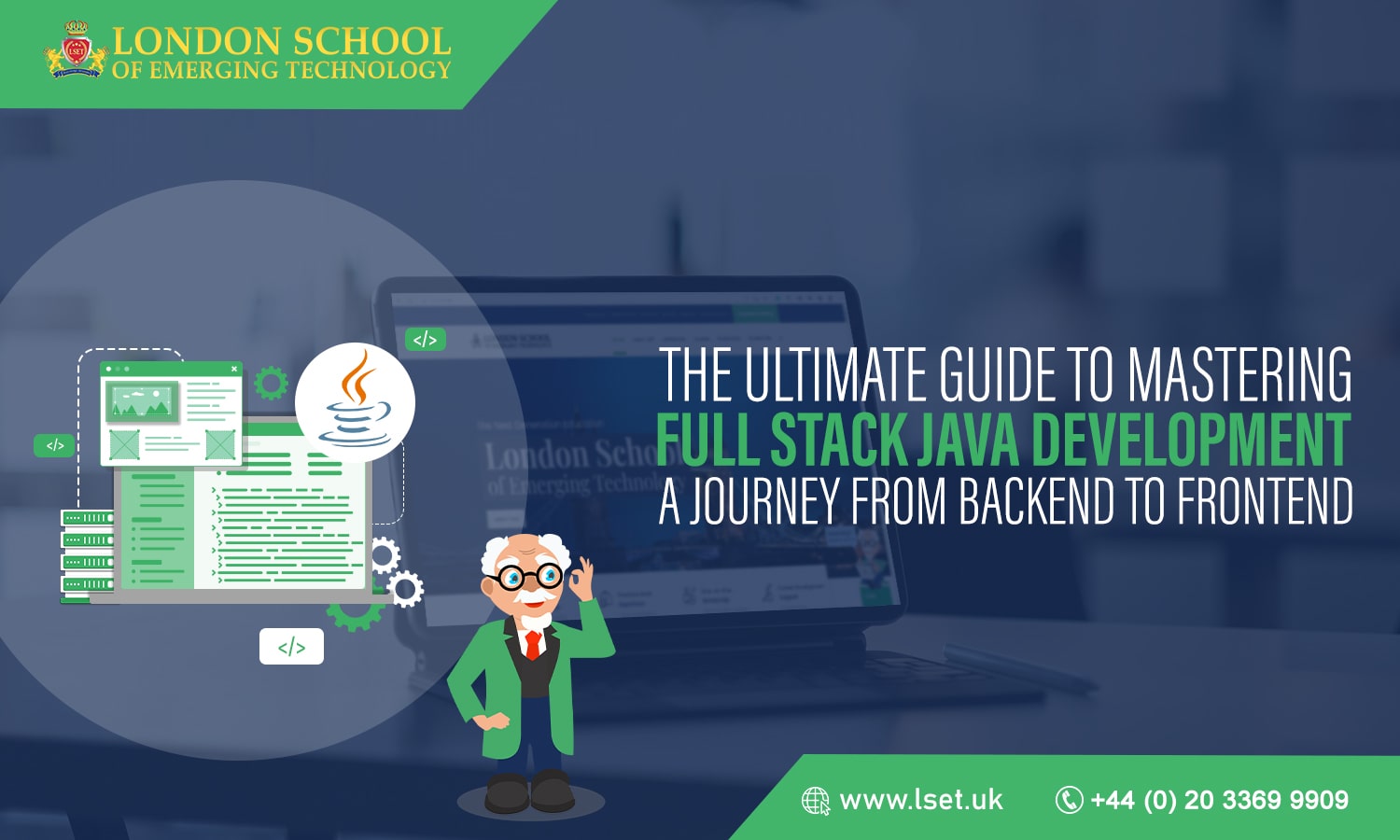Introduction to Full Stack Java Development
Full-stack Java development is a comprehensive approach to building web applications that involves working on a project’s backend and frontend aspects. This guide will explore the world of full-stack Java development and take you on a journey from backend to frontend.
Understanding the Role of a Full-Stack Java Developer
A full-stack Java developer is a multifaceted expert with the skills and expertise to manage a web application’s backend and front-end development. Their responsibilities encompass designing, implementing, and maintaining all facets of the application, spanning from server-side logic to user interface.
Being a full-stack Java developer necessitates a profound comprehension of diverse technologies and frameworks. They must be frontend in Java programming language and frontend technologies such as HTML, CSS, and JavaScript. Additionally, they must know about databases, web servers, and APIs to build and integrate different components of the application effectively.
The Benefits of Becoming a Full-Stack Java Developer
Becoming a full-stack Java developer comes with numerous benefits. Firstly, it broadens the spectrum of job opportunities available. Many companies are looking for professionals who can handle both backend and frontend development, and being a full-stack Java developer puts you in high demand.
Another benefit is the ability to work on diverse projects. As a full-stack Java developer, you can work on different parts of an application, allowing you to gain exposure to various technologies and frameworks. Frontends the work is interesting and helps in personal and professional growth.
Additionally, being proficient in both backend and frontend development allows you to take complete ownership of a project. You can independently handle the entire development process, from designing the database structure to creating a user-friendly interface. This level of autonomy and control is immensely satisfying and rewarding.
Fundamental SK frontend Full-Stack Java Development
To excel in full-stack Java development, you must acquire several essential skills. Firstly, a strong foundation in Java programming language is crucial. You should be comfortable writing clean, efficient code and understand object-oriented programming principles well.
In addition to Java, proficiency in frontend technologies like HTML, CSS, and JavaScript is essential. These components are the foundational elements of the user interface, and a strong command of them is crucial for crafting visually appealing and interactive web pages.
Furthermore, a full-stack Java developer should know frontend databases and SQL. Proficiency in designing and querying databases is essential for constructing resilient and efficient backend systems.
Backend Development with Java
Backend development is the foundation of any web application. It involves creating the server-side logic that handles data processing, business logic, and communication with databases and APIs. Java is popular for backend development due to its robustness and scalability. With Java, you can easily create RESTful web services that expose data and functionality to other application components. When developing the backend with Java, it is essential to follow best practices. This includes writing modular and reusable code, implementing proper error handling and validation, and ensuring the application’s security. By adhering to these best practices, you can create backend systems that are efficient, secure, and easy to maintain.
Frontend Development with Java
Frontend development revolves around crafting the user interface of a web application. With frontend technologies like HTML, CSS, and JavaScript, Java allows you to build dynamic and interactive web pages.
Java provides frameworks like JavaServer Faces (JSF) and Frontend Pages (JSP) that facilitate the development of the front end. These frameworks offer powerful features for managing the frontend interface, handling user input, and integrating with the backend.
When working on the front end with Java, paying attention to user experience is important. Designing intuitive and user-friendly interfaces enhances the overall usability of the application. Additionally, optimising the performance of front-end code and ensuring cross-browser compatibility are crucial aspects of front-end development.
Best Practices for Full Stack Java Development
To become a proficient full-stack Java developer, it is important to follow best practices throughout development. These best practices enhance the quality, maintainability, and scalability of front-end applications.
One of the front practices is modularisation. Breaking down the application into smaller, manageable modules makes developing, testing, and maintaining easier. Each module should have a clear responsibility and be loosely coupled with other modules to promote reusability and flexibility.
Another important aspect is continuous integration and deployment. Implementing automated testing and deployment pipelines helps catch bugs early and deliver new features quickly. It also ensures a smooth and efficient development workflow.
Furthermore, adopting agile methodologies and collaborating with other team members fosters effective communication and project management. Regular code reviews and knowledge-sharing sessions can significantly improve the overall quality of the codebase.
Conclusion
Mastering full-stack Java development is a rewarding journey that opens up opportunities. By acquiring the essential skills and following best practices, you can become a proficient full-stack Java developer capable of building robust and user-friendly web applications. If you’re ready to elevate your Java skills and embark on this exciting journey, consider enrolling in the comprehensive course offered by the London School of Emerging Technology (LSET). Their course is designed to empower you with the expertise to excel in full-stack Java development. This course covers everything from mastering backend and frontend Java development to diving into Java web services and harnessing the power of the Java Spring framework. This opportunity will unlock exciting career prospects in {full-stack Java development}. Enrol now and take your Java skills to new heights.

